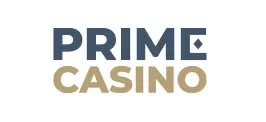Poker Odds
Odds and probability are crucial factors in poker. All players, from newcomers to seasoned poker fans, can benefit from understanding poker odds and probability to some degree. But calculating probability and odds in poker hands is also challenging, especially for beginners delving into the game for the first time.
In this guide to poker odds and probability, you will learn how to calculate odds and probability, along with other fantastic tips.
What is Probability in Poker?
Understanding Poker Odds and Probability in Poker Games
There are two particularly common odds for poker:
- The odds of dealing with specific hole (starting) cards
- The odds of flopping a made hand
Understanding how odds apply in both cases can help you make the right decisions at the right time when playing poker. Let us take a close look at both odds.
Odds of Dealing with Specific Hole Cards
In Texas Hold ‘em, one of the most popular poker variations, the number of possible hole card combinations is 1,326. If we take pocket aces, for instance, and divide six combinations out of all the possible ones, we will get that specific hand once per every 221 hands.
If we take another pair, such as an ace and a king, that combination will appear once per 332 hands (on average). You’ll get unpaired hands with specific values less often than pocket pairs.
Odds of Flopping a Made Hand
A made hand in poker contains a pair or higher and has no need for a draw, likely putting the player in a more advantageous position than others at the table.
The odds of flopping a made hand in poker are:
- Unpaired cards with a pair on the flop — 29% (1 / 3.5)
- Pocket pair with a set on the flop — 11.8% (1 / 8.5)
- A straight with connected cards on the flop — 1.3% (1 / 77)
- A flush with suited connectors — 0.8% (1 / 119)
How to Calculate Odds for Poker
Decks used in poker games have 52 cards, and each player is dealt two cards before the flop. That means we have no way of knowing which of the 50 other cards we will see on the flop.
With that in mind, the odds of a given card being dealt in the flop is 1 in 50 (or 2%). How about knowing what cards appear on the flop? Now that three more cards have been revealed (the flop), the odds of seeing specific cards change to 1 in 47 (2.12% probability).
Moving on to the odds of a card being dealt on the river, the odds drop slightly to 1 in 46 (2.17%). That is because we know what four of the cards are at this stage in the game.
Generally, we can say that each card has a 2% probability of being revealed on any street.
Poker Odds Chart
Before we move onto the poker odds chart below, let us just cover outs. An ‘out’ is a card that can make your poker hand stronger.
Let us say you hold a pair of diamonds in your hand, and another two diamonds are on the flop. That means you have 9 out cards in total: 13 diamonds in total in the deck and 4 are seen, leaving 9 still to be dealt. Understanding outs is helpful for recognising which cards you need to draw to build different winning hands.
This poker odds chart will focus on pot odds: determining if a call will profit you or not. You can use pot odds alongside other types of poker mathematics, such as hand odds and equity.
| Outs | 1 Card percentage | 2 Card percentage | 1 Card Odds | 2 Card Odds | Type of Draw |
| 1 | 2% | 4% | 46/1 | 23/1 | Backdoor straight or flush (2 cards needed) |
| 2 | 4% | 8% | 22/1 | 12/1 | Pocket pair to set |
| 3 | 7% | 13% | 14/1 | 7/1 | 1 overcard |
| 4 | 9% | 17% | 10/1 | 5/1 | Inside straight/2 pair to a full house |
| 5 | 11% | 20% | 8/1 | 4/1 | 1 pair to 2 pair or set |
| 6 | 13% | 24% | 6.7/1 | 3.2/1 | No pair to pair/2 overcards |
| 7 | 15% | 28% | 5.6/1 | 2.6/1 | Set to quads or full house |
| 8 | 17% | 32% | 4.7/1 | 2.2/1 | Open straight |
| 9 | 19% | 35% | 4.1/1 | 1.9/1 | Flush |
| 10 | 22% | 38% | 3.6/1 | 1.6/1 | Inside straight and 2 overcards |
| 11 | 24% | 42% | 3.2/1 | 1.4/1 | Open straight and 1 overcard |
| 12 | 26% | 45% | 2.8/1 | 1.2/1 | Flush and inside straight or flush and 1 overcard |
| 13 | 28% | 48% | 2.5/1 | 1.1/1 | |
| 14 | 30% | 51% | 2.3/1 | 0.95/1 | |
| 15 | 33% | 54% | 2.1/1 | 0.85/1 | Flush and open straight or flush and 2 overcards |
| 16 | 34% | 57% | 1.9/1 | 0.75/1 | |
| 17 |
37% | 60% | 1.7/1 | 0.66/1 |
Calculating the Probability of Poker Hands
Calculating the probability of poker hands can be difficult. To get started, we need to talk about equity and equity spread. In poker, the difference in equity spread is when you have just one opponent (a heads up game) in a poker hand with you versus playing against multiple opponents. In a heads up game, the equity of players’ respective hands is higher than when playing against several people, as it is spread among fewer players.
Let’s focus on a pocket aces put up against this range for an opposing player:
A suited ace
A pocket pair
Suited connectors (54s - T9s)
Q9s and K9s
Two broadway cards
Suited connectors (one gapped, 86s - J9s)
The equity percentages for the pocket aces against a varying number of players are as follows:
Against a single player — 83.4%
Against two players — 70.6%
Against three players — 60.2%
Against four players — 51.4%
Understanding the Probability of Draws
Figuring out the probability of draws in poker is vital to play strategically. The first step is to understand the number of outs available — which cards that could still be dealt will help you build your best hand?
The next step is to use the rule of two and four to make sense of your chances of getting an out. For instance, if the turn and river have not been dealt yet, that means multiplying the number of outs by four to discover the percentage chance of getting an out. But multiply the outs by two instead if you’re only waiting for the river to happen.
As an example, let us say you hold an A-K of diamonds. The board has a 2, a 5, a 9, and a 10, with two of them diamonds. The river has yet to be dealt. That means there are nine outs overall, so you just need to multiply nine by two to find your percentage of getting your ideal draw (18%).
Recommended Casinos Sites for Playing Poker Online
If you’re ready to try your hand at poker now that you have read our guide to poker odds and probability, you can join games at plenty of online poker sites. Here are the sites we recommend.
Prime Casino

Get 100 Bonus Spins
Welcome Offer
Mega Casino

Get a 100% Bonus
Up to $100
PlayOJO

Get 80 Free Spins
No Wagering
Poker Odds Final Thoughts
Understanding poker hands odds and overall probability can be incredibly tough for beginners. There are lots of factors to consider, and some maths, which may make it all so much more intimidating. But as this guide has shown, calculating poker odds and probability can help you make informed decisions at a poker table.
Whatever poker games you play, remember to gamble responsibly. Set a bankroll limit before you start playing, stick to it, and focus on having fun instead of chasing wins.Poker Odds FAQs
Here are the most common questions we get asked about poker odds in Canada.
